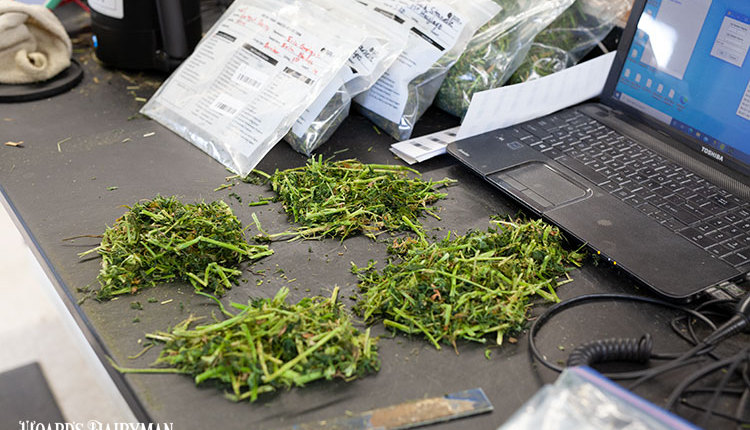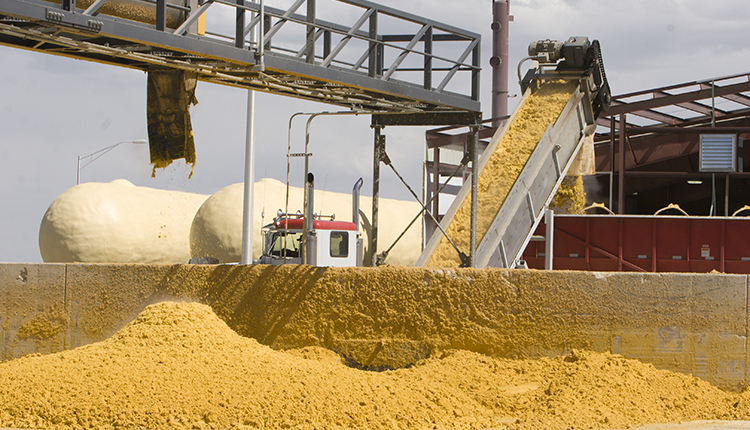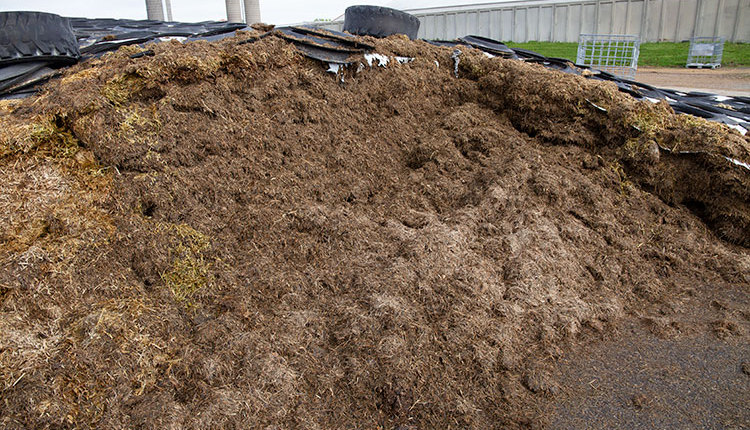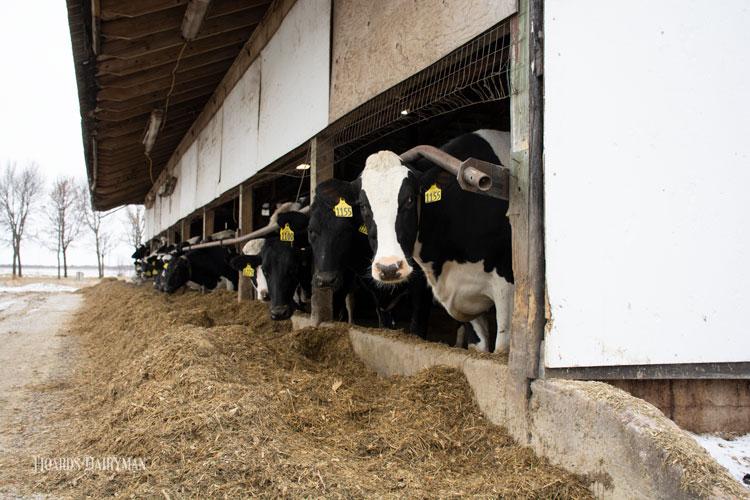
As I contemplated this review of forage dietary cation-anion difference (DCAD), I was taken back 40 years to a time when I had recently stepped into the arena of dairy nutrition. Recently out of school and without much training, I was doing field nutrition work in south central Pennsylvania.
I had stumbled across a small but well-managed dairy operation being serviced by a respected feed company. However, there were ongoing issues with milk fever and udder edema in the herd, and I was asked to handle the dry cow nutrition program. Armed with a computer, software, and a misplaced sense of understanding, I was confident that it would only take an investment of time and product to solve the dairyman’s problems.
What I was about to learn is that prefresh and milk cow diets are impacted by unrecognized mineral levels.
We’ve learned a great deal
We know a lot more about dry cow nutrition and managing DCAD balance than we did 40 years ago. We realize that DCAD balance not only has an impact on setting up cow metabolism to meet metabolic needs at calving, but optimal DCAD will assist lactating cows with dry matter intake and milk yield, especially under heat stress settings.
What may not always be understood is the variation that exists in forage DCAD levels. As a review, the DCAD equation most often used in the field is milliequivalents (meq): [(%K divided by 0.039) + (%Na divided by 0.023)] – [(%Cl divided by 0.0355) + (%S divided by 0.016)]/100 grams of dietary dry matter (DM). A key point to consider from this equation is that the level of chloride has an almost equal counteracting impact on the contribution of potassium. We recognize that potassium can be quite variable, but we are often unaware of the of influence of chloride.
In forage and feed laboratories, most of the mineral chemistry analysis is performed by acid digestion and either atomic absorption (AA) or inductively coupled plasma spectroscopy (ICP). Chloride does not lend itself to analysis by this approach and is usually determined by a more labor-intensive titration process. This adds cost to the analysis, and as a result may not be routinely requested by the nutritionist. For important mineral evaluations, near-infrared spectroscopy (NIRS) is not a valid approach for any mineral determination.
Below is a table of mineral and DCAD values for various forage types determined in the last two years at Cumberland Valley Analytical Services. A key point from the data is the relative variation and potential impact on DCAD from chloride. Chloride variation is, in most cases, approximately 50% of what is contributed by potassium.
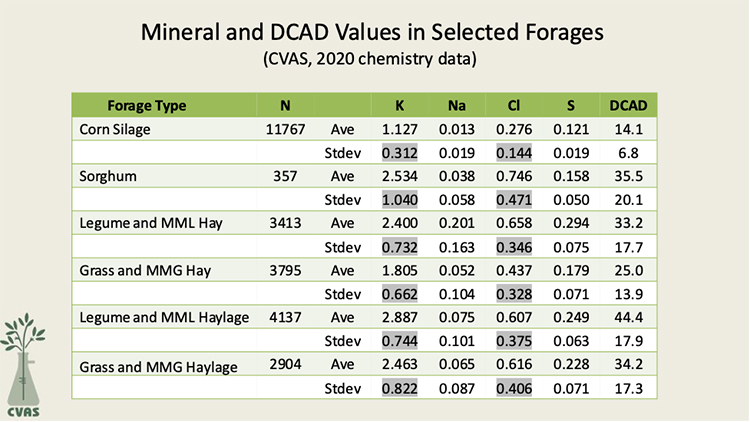
Many dairymen source “DCAD alfalfa hay” for use in dry cow diets. Alfalfa hay is not often considered as a dry cow feed due to its inherent high potassium levels. However, not all alfalfa hay mineral balance is the same. There are many alfalfa hays with potassium levels under 1.5% with DCAD values offset with higher chloride levels. Below is a graph that shows a distribution of alfalfa hay DCAD levels.
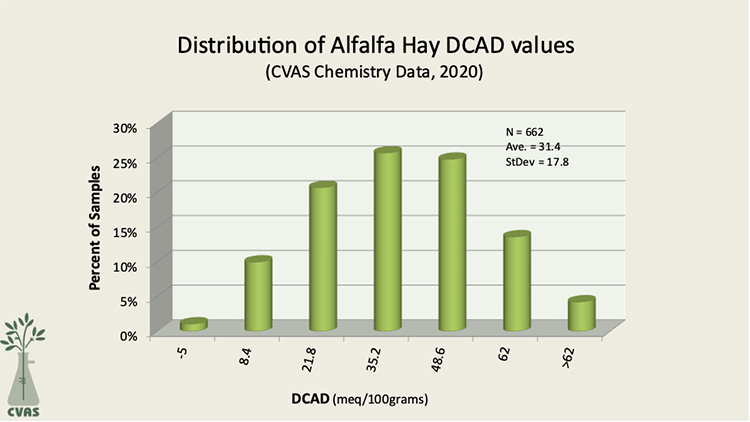
If we examine dairy TMR that has been evaluated for DCAD minerals, we find that there is a significant range in DCAD. Much of the difference is driven by supplemented levels of minerals. However, underlying supplemented levels are mineral constituents contributed by forages.

Back to the opening story
I was not successful in contributing to a positive outcome for that dairyman who I worked with 40 years ago. It was one of those early experiences that caused me to take my role on the farm seriously as I provided rations and offered management support. This experience as well as others left me frustrated by the lack of information that was available to understand forage quality and its impact on animal performance.
Cumberland Valley Analytical Services was started almost 30 years ago to meet the challenge of providing relevant information. There are multiple quality labs available to our industry to provide informational tools to productively shape nutritional and management decisions on the farm. Let us make use of the resources that are available now.






